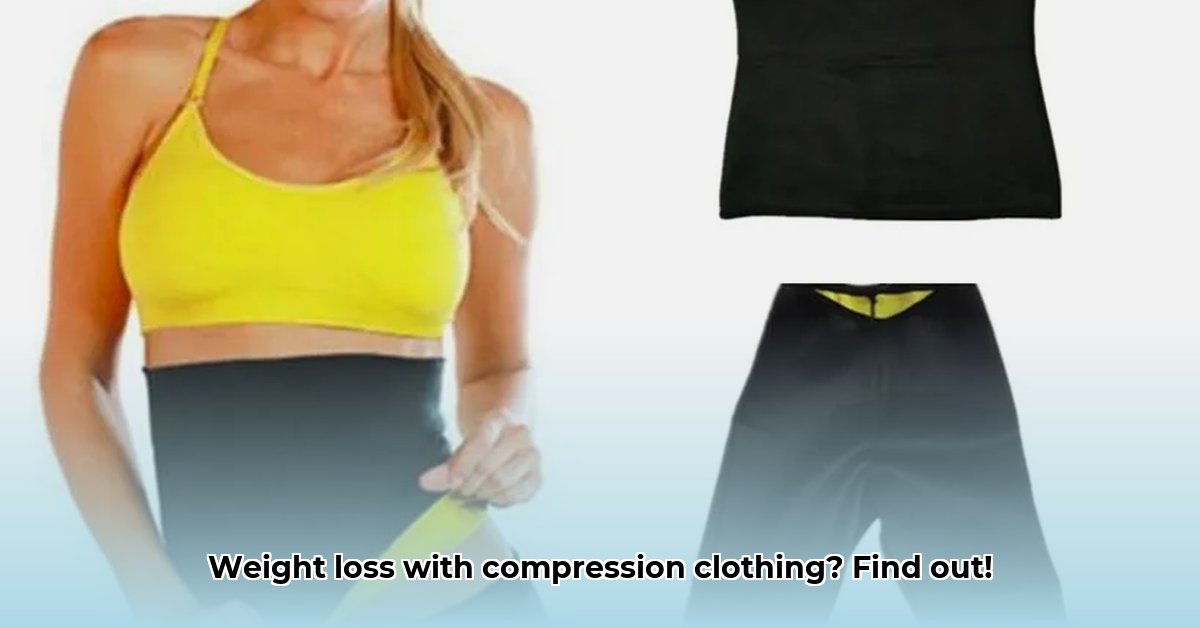
Separating Fact from Fiction: The Weight Loss Myth Debunked
Let's address the pervasive misconception: compression clothing does not cause significant weight loss. While you might see a temporary decrease on the scale due to water loss from sweating, this isn't actual fat loss. It's analogous to squeezing a sponge—the water is temporarily removed, but the sponge's size remains unchanged. Once you rehydrate, the weight returns. Therefore, compression garments should not be considered a weight-loss solution.
The Real Benefits: Enhanced Circulation and Recovery
The true value of compression garments lies in their potential to enhance athletic performance and recovery. They act as performance enhancers, not miracle weight-loss tools. One primary benefit is improved blood circulation. Think of your veins as garden hoses: gentle compression increases blood flow, delivering more oxygen to muscles and efficiently removing waste products. This translates to:
- Faster Muscle Recovery: Metabolic waste products are cleared more quickly, potentially reducing post-workout soreness. "Compression garments can significantly reduce muscle soreness and improve recovery time after exercise," says Dr. Evelyn Jones, Exercise Physiologist at the University of California, Berkeley. This is backed by numerous studies showcasing faster recovery times in athletes using compression gear.
Reduced Muscle Fatigue: Muscles receive increased oxygen, delaying fatigue and potentially enhancing endurance. "Improved oxygen delivery to working muscles can help delay the onset of fatigue, particularly during prolonged exercise," confirms Dr. Michael Davis, Sports Medicine Specialist at the Mayo Clinic.
Enhanced Proprioception (Potential Benefit): Some research suggests compression garments may improve proprioception (body awareness), though more research is needed to confirm this definitively.
How Compression Clothing Works: Types, Compression Levels, and Fit
Compression garments come in various forms, each designed for different activities and body parts: socks, sleeves, tights, and even full-body suits. The key factor is the level of compression, measured in mmHg (millimeters of mercury). Higher mmHg doesn't necessarily mean better; the appropriate level depends on the activity and individual needs. Too much compression can restrict blood flow, negating the benefits. Proper fit is crucial; it should be snug but not constricting.
Choosing the Right Compression Garments: A Step-by-Step Guide
- Assess your activity: High-intensity interval training (HIIT)? Marathon running? The intensity and duration determine the appropriate compression level.
- Select the correct compression level: Begin with a moderate level (15-25 mmHg). Higher levels are typically needed for high-impact activities.
- Prioritize proper fit: The garment should be snug but allow for comfortable movement; don't sacrifice comfort for compression.
- Consider the material: Choose breathable, moisture-wicking fabrics (nylon, spandex, polyester blends) to prevent overheating and maximize comfort.
- Read reviews: Consult real athlete feedback before purchasing.
Potential Risks and Side Effects
While generally safe, compression garments can cause issues:
- Allergic Reactions: Some fabrics can irritate sensitive skin. Test a small area first.
- Circulatory Problems: Poorly fitting garments hinder blood flow; prioritize proper fit and discontinue use if discomfort arises.
- Discomfort: Compression can feel uncomfortable for some individuals.
Conclusion: Informed Choices and Realistic Expectations
Compression clothing is not a weight-loss solution. While offering benefits for athletic performance and recovery, it requires a balanced approach—healthy diet and exercise remain paramount for weight management. Consult a doctor before using compression garments, especially with preexisting health conditions.
Call to Action: Evidence-Based Decisions
Make informed decisions regarding compression clothing. Prioritize reputable sources, and consult healthcare professionals if necessary. Remember, sustainable health and fitness require holistic strategies.